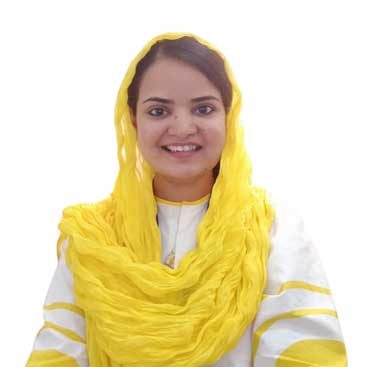
“Yom-e-Takbeer is not just a celebration of nuclear capability; it is a reminder of what Pakistan can achieve when science and national interest align.”
While being among the world’s nuclear states, Pakistan’s spending on research and development (R&D) remains significantly low, accounting for just 0.16% of its GDP in 2023, according to estimates by the World Bank and the United Nations which is far below the levels observed in many other countries. Pakistan’s contribution to global scientific research is less than 0.5%, indicating an underinvestment in technology and technological improvement. While analyzing the downturn in scientific research and development in Pakistan we must not forget our brilliant start in 1960s and 1970s marked the early ascent of Pakistan’s scientific community, earning international recognition across various scientific disciplines. During this era, Pakistani scientists made significant contributions to Natural Product Chemistry, as well as to theoretical, particle, mathematical, and nuclear physics, among other key branches and subfields of Chemistry and Physics. This pioneering research was led by notable scientists such as Riazuddin, Ishfaq Ahmad, Salimuzzaman Siddiqui, Abdul Qadeer Khan, Atta-ur-Rahman, and Samar Mubarakmand.
When every year on May 28, we commemorate Yom-e-Takbeer to mark Pakistan’s emergence as a nuclear power, the nation should remember that Pakistan’s path to nuclear capability was more than a military milestone, it was a remarkable success story of homegrown scientific research, innovation, and unwavering determination. Yom-e-Takbeer is not just associated with defense and strategic deterrence, it also stands as a compelling testament to what the nation can achieve when political resolve, scientific expertise, and national interest align. Pakistan’s nuclear journey gained momentum following India’s first nuclear test in 1974. This led to the establishment of key institutions such as the Pakistan Atomic Energy Commission (PAEC) and later the Kahuta Research Laboratories (KRL), marking the beginning of a new era in the country’s scientific advancement. Visionary scientists like Dr. Abdul Qadeer Khan and Dr. Ishfaq Ahmad emerged as national figures, not solely for developing nuclear weapons, but for proving that, with the right support and environment, Pakistani scientists were capable of achieving world-class innovation.
Despite facing sanctions, limited resources, and international pressure, Pakistan made deliberate investments in research, education, and technological infrastructure. Laboratories were set up, promising individuals were sent abroad for advanced training, and homegrown engineering solutions were actively pursued. This era was marked by an uncommon yet effective collaboration between policymakers, scientists, and the defense establishment.
The momentum created throughout the scientific advancement has, however, not been maintained. Pakistan continues to make pitifully little investment in research. In contrast to its regional neighbours, China and India, which invest more than 2% and 0.7% of their GDP in R&D, respectively.
Additionally, there is a considerable brain drain. Every year, thousands of Pakistani engineers, scientists, and IT workers depart the nation in pursuit of better prospects. Once a representation of academic change, the Higher Education Commission (HEC) has experienced budget cuts and administrative difficulties that have impeded advancements in both scientific research and higher education. Similarly, Pakistan’s nuclear program is still being watched, but this limited focus hasn’t resulted in more funding for scientific advancement in fields like clean energy, healthcare, agriculture, and climate change.
There are significant policy Loopholes and structural challenges hindering the scientific development. Although Pakistan has drafted multiple science and technology policies, implementation has been inconsistent and poorly coordinated. There is no long-term roadmap linking research with national development goals. Review any policy, planning document, or five-year plan since the process began in the 1980s, each plan typically starts with an evaluation of the previous one, attempting to show whether it succeeded or failed. However, it is often evident that the plan fell short of achieving even half of its intended goals, and whatever progress was made happened despite the plan, rather than because of it.
Despite the introduction of new policy frameworks, the core challenges in Pakistan’s scientific landscape persist. Budget allocations for science remain minimal and are frequently misdirected. Many public research institutions are underutilized, lacking modern infrastructure and adequate incentives for staff. Unlike developed nations where academia and industry collaborate to commercialize research, Pakistan lacks institutional structures to support such partnerships. Consequently, much of the research remains theoretical and detached from practical applications. Private sector investment in R&D is rare, hindered by a lack of trust in public institutions, ambiguous intellectual property laws, and limited tax incentives. As a result, talented researchers often choose to pursue careers abroad, drawn by superior facilities, better career opportunities, and greater respect for academic freedom. The absence of a clear and rewarding career pathway for scientists in Pakistan further discourages them from returning.
The role of the state and subsequent governments is pivotal in this context. Pakistan’s nuclear journey demonstrates that meaningful transformation becomes possible when the state views science as a strategic priority. The success of Pakistan’s nuclear program stemmed from its recognition as a national priority.
The government should set a clear target to raise research and development (R&D) spending to at least 1% of GDP within the next five years. To ensure sustainability and continuity, this investment must be institutionalized through a national science fund that is shielded from political interference. Establishing high-quality, well-resourced research centers that address key national challenges such as water scarcity, climate change, artificial intelligence, health, and agriculture should be prioritized, ideally through public-private partnerships.
The Higher Education Commission (HEC) must be depoliticized and empowered to promote innovation-led research. Scholarship programs should be expanded with clear, enforceable commitments requiring graduates to serve in Pakistan for a designated period. At the same time, policies should incentivize private sector involvement in research through tax breaks, innovation grants, and startup incubation initiatives.
Just as military accomplishments are celebrated, civilian scientific achievements should be acknowledged through national honors, media recognition, and public outreach campaigns. Moreover, overseas scientists and entrepreneurs should be actively engaged through short-term assignments, collaborative ventures, and visiting fellowships to leverage their expertise for national development. By investing in scientific research beyond the defence sector, Pakistan can transform its socio-economic landscape, create jobs, and elevate its global standing.
The writer heads the Centre for Alternative Perspectives (CAP), which promotes interdisciplinary research and alternative perspectives.




